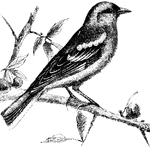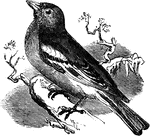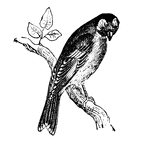Clipart tagged: ‘finch’
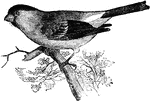
Cassin's Bullfinch
"Pyrrhula cassini. Cassin's Bullfinch. Above, clear ashy-gray; below, cinnamon-gray; rump and under…
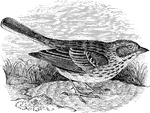
Bay-winged Bunting
"Pooecetes gramineus. Grass Finch. Bay-winged Bunting. Vesper-bird. Above, grayish-brown, closely and…

Cirl Bunting
Buntings build their nests on the ground, or on low bushes, and in this deposit four or five eggs, (Figuier,…
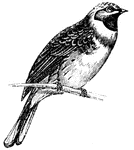
Cirl Bunting
Buntings build their nests on the ground, or on low bushes, and in this deposit four or five eggs, (Figuier,…

Ortolan Bunting
The Orlotan buntings are very shy; still great numbers are captured in nets, when they are kept in confinement,…

Reed Bunting
Buntings build their nests on the ground, or on low bushes, and in this deposit four or five eggs, (Figuier,…

Canary
Canaries are generally known by us as cage-birds, where they are recognized by yellow plumage, (Figuier,…

Canary
Canaries are generally known by us as cage-birds, where they are recognized by yellow plumage, (Figuier,…
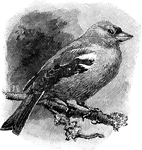
Chaffinch
A common European bird whose pleasant short and often repeated song is haerd fro early spring to the…
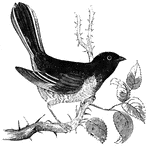
Chewink
Also known as the ground-robin or ground-finch, the chewink lives in thickets along the borders of woods.

White-winged Crossbill
"Loxia leucoptera. White-winged Crossbill. Rosy-red, sometimes carmined or even crimsoned, obscured…

Finch
This finch, called a linnet, feeds primarily on hemp and linseed, hence its name, (Figuier, 1869).
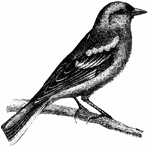
Finch
This finch, called a linnet, feeds primarily on hemp and linseed, hence its name, (Figuier, 1869).
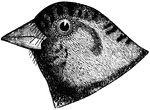
Brandt's Rosy Finch
"Leucosticte griseinucha. Brandt's Rosy Finch. Like the littoral variety of tephrocotis, in having the…

Bull Finch
Resembling a grosbeak, the bull-finch is common and England, and can be found in other regions of Europe…
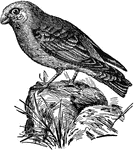
Bull Finch
"The Bull Finch is a well known bird, locally know as the norskpipe, the coal-hood, the hoop, or the…

Hawfinch
Feeding on pollen-stalks, laurel-berries, and the like, the haw-finch is also known as the common grosbeak…
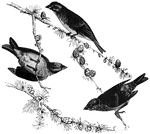
Purple Finch
The purple finch, also known as the American linnet, has a habit of erecting the feathers of its head…
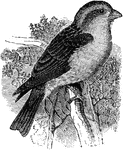
Purple Finch
"Carpodacus purpureus. Purple Finch (better Crimson Finch). Rose-red, paler below, insensibly whitening…

Seaside Finch
"Ammodramus maritimus. Seaside Finch. Olive-gray, obscurely streaked on back and crown with darker and…
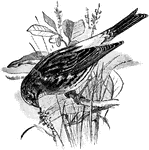
Serin Finch
The Serin Finch (Serinus hortulanus) is a small passerine bird in the Fringillidae family of finches.

Swainson's Rosy Finch
"Leucosticte tephrocotis. Swainson's Rosy Finch. Gray-crowned Rosy Finch. Sexes similar. Adult in breeding…
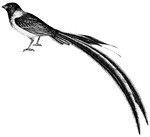
Whidah Finch
The long, drooping tail feathers of the male Whidah finch in the breeding season give them a singular…
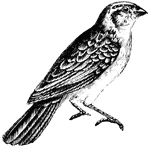
Whidah Finch
The long, drooping tail feathers of the male Whidah finch in the breeding season give them a singular…
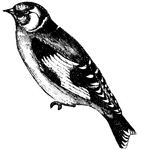
Goldfinch
the goldfinch is exceedingly docile, easily tamed and when raised as a cage-bird will readily become…

Goldfinch
the goldfinch is exceedingly docile, easily tamed and when raised as a cage-bird will readily become…
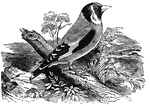
Common Goldfinch of Europe
Also known as the thistle-finch, it is often kept as a pet and taught to do tricks.
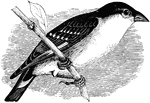
Mexican Goldfinch
"Astragalinus mexicanus. Mexican Goldfinch. The upper parts continuously-black, and the black of the…

Green Grosbeak
Also known as the green finch, the green grosbeak frequents gardens, orchards, small woods, and cultivated…

Pine Grosbeak
A large fringilline bird of Europe and North American found chiefly in coniferous woods in northerly…
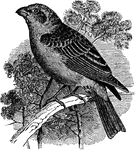
Pine Grosbeak
"Pinicola enucleator. Pine Grosbeak. Light carmine or rosy-red, feathers of back with dusky centres;…
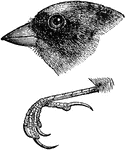
Red-poll Linnets
"Bill small, short, straight, very acute, more or less compressed, the lateral outlines usually a little…
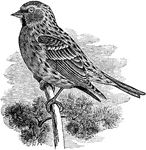
Common Redpoll
"Aegiothus linaria. Common Redpoll. Common Red-poll. Frontlet, lores, and throat-spot sooty-black. Crown…
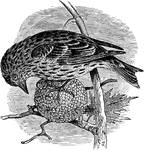
Pine Siskin
"Carduelis pinus. Pine Linnet. Pine Finch. American Siskin. Pine Siskin. Continuously streaked, above…
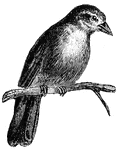
Sparrow
Java sparrows are eagerly sought for as pets, because of their brilliant plumage and the facility with…
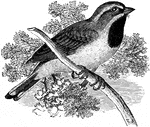
Black-throated Sparrow
"Amphispiza bilineata. Black-throated Sparrow. Black-faced Sage Sparrow. face, chin, and throat sharply…

House Sparrow
The House Sparrow is lively, pert, and cunning, the true gamin of the winged race,(Figuier, 1869).

House Sparrow
The House Sparrow is lively, pert, and cunning, the true gamin of the winged race,(Figuier, 1869).
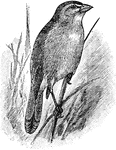
Tanager
The Texas Sparrow or Green Finch (Embernagra rufovirgata) is a finch-like tanager of the Embernagra…
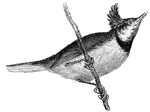
Crested Titmouse
The tit is indeed the incarnation of motion; it is continually skipping from branch to branch...(Figuier,…

Widowbird
The widowbird, also known as the whidahfinch. Although most specimens are about the size of a canary,…


